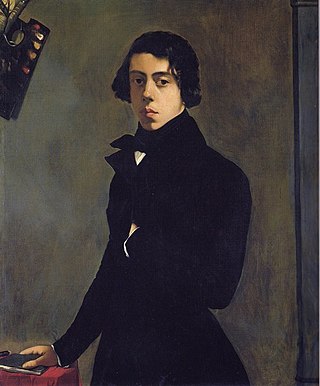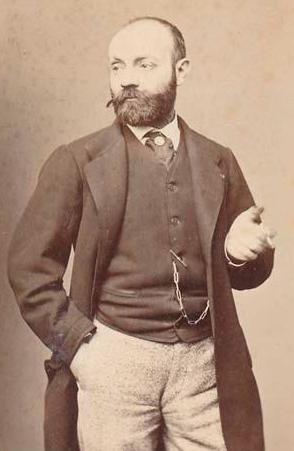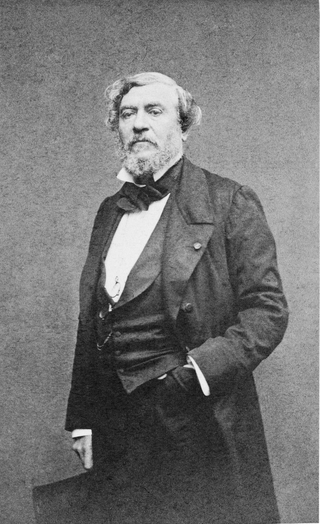
The Louvre, or the Louvre Museum, is a national art museum in Paris, France, and one of the most famous museums in the world. It is located on the Right Bank of the Seine in the city's 1st arrondissement and home to some of the most canonical works of Western art, including the Mona Lisa,Venus de Milo, and Winged Victory. The museum is housed in the Louvre Palace, originally built in the late 12th to 13th century under Philip II. Remnants of the Medieval Louvre fortress are visible in the basement of the museum. Due to urban expansion, the fortress eventually lost its defensive function, and in 1546 Francis I converted it into the primary residence of the French kings.

Charles Le Brun was a French painter, physiognomist, art theorist, and a director of several art schools of his time. He served as a court painter to Louis XIV, who declared him "the greatest French artist of all time". Le Brun was a dominant figure in 17th-century French art and was influenced by Nicolas Poussin.

Abd al-Qadir ibn Muhyi al-Din, known as the Emir Abdelkader or Abd al-Qadir al-Hassani al-Jaza'iri, was an Algerian religious and military leader who led a struggle against the French colonial invasion of Algiers in the early 19th century. As an Islamic scholar and Sufi who unexpectedly found himself leading a military campaign, he built up a collection of Algerian tribesmen that for many years successfully held out against one of the most advanced armies in Europe. His consistent regard for what would now be called human rights, especially as regards his Christian opponents, drew widespread admiration, and a crucial intervention to save the Christian community of Damascus from a massacre in 1860 brought honours and awards from around the world. Within Algeria, he was able to unite many Arab and Berber tribes to resist the spread of French colonization. His efforts to unite the country against French invaders led some French authors to describe him as a "modern Jugurtha", and his ability to combine religious and political authority has led to his being acclaimed as the "Saint among the Princes, the Prince among the Saints".

Jean-Baptiste Regnault was a French painter.

Antoine-Jean Gros was a French painter of historical subjects. He was granted the title of Baron Gros in 1824.

Théodore Chassériau was a Dominican-born French Romantic painter noted for his portraits, historical and religious paintings, allegorical murals, and Orientalist images inspired by his travels to Algeria. Early in his career he painted in a Neoclassical style close to that of his teacher Jean-Auguste-Dominique Ingres, but in his later works he was strongly influenced by the Romantic style of Eugène Delacroix. He was a prolific draftsman, and made a suite of prints to illustrate Shakespeare's Othello. The portrait he painted at the age of 15 of Prosper Marilhat makes Chassériau the youngest painter exhibited at the Louvre museum.

The Château de Chantilly is a historic French château located in the town of Chantilly, Oise, about 50 kilometres north of Paris. The site comprises two attached buildings: the Petit Château, built around 1560 for Anne de Montmorency, and the Grand Château, which was destroyed during the French Revolution and rebuilt in the 1870s. The château is owned by the Institut de France, which received it from Henri d'Orléans, Duke of Aumale.
The Battle of the Smala took place on 16 May 1843, when the French, led by Henri d'Orléans, Duke of Aumale, raided the personal encampment of Algerian resistance leader Emir Abdelkader al-Jazairi while al-Qadir was absent on a raiding expedition. The 500 French cavalrymen surprised the camp defenders, who fired a single volley before scattering. More than 3000 of al-Qadir's followers out of a camp population of 30,000 were captured, as were many of his possessions, including his war chest and a library valued at £5000. Three days later, another 2500 followers were captured.

Gustave Clarence Rodolphe Boulanger was a French figurative painter and academic artist and teacher known for his Classical and Orientalist subjects.

Louis Candide Boulanger was a French Romantic painter, pastellist, lithographer and a poet, known for his religious and allegorical subjects, portraits, genre scenes.

Jean Antoine Théodore Gudin was a French marine painter and court painter to both king Louis Philippe and subsequently Emperor of the French Napoleon III. Along with Louis-Philippe Crépin, he became one of the first two official Peintres de la Marine in 1830.

The Galerie des Batailles is a gallery occupying the first floor of the Aile du Midi of the Palace of Versailles, joining onto the grand and petit appartement de la reine. 120 m (390 ft) long and 13 m (43 ft) wide, it is an epigone of the Grande Galerie of the Louvre and was intended to glorify French military history from the Battle of Tolbiac to the Battle of Wagram.

Bonaparte at the Pont d’Arcole is an oil-on-canvas painting executed in 1796 by the French artist Antoine-Jean Gros. It depicts an episode during the Battle of Arcole in November 1796, with General Napoleon Bonaparte leading his troops to storm the bridge.
Jean-Charles Tardieu, also called "Tardieu-Cochin" was a successful French painter during the ages of Napoleon and of the Bourbon Restoration. His work was primarily historical, but also included landscapes, portraits and religious subjects.

Eugène Lepoittevin, also known as Poidevin, Poitevin, and Le Poittevin, was a French artist who achieved an early and lifelong success as a landscape and maritime painter. His work ranged from erotic caricatures to massive battle scenes. His works are in the collections of many museums throughout France. He made many paintings set in and around the fishing village of Étretat, and in 2020 he was the subject of an exhibition and book, L'invention d'Étretat: Eugène Le Poittevin, un peintre et ses amis à l'aube de l'impressionnisme.

Prosper Lafaye, originally Lafait was a French painter at the court of King Louis-Philippe I. He also worked as a designer and was a master stained glass artist.

Charles-Caius Renoux was a French painter, lithographer, and illustrator. He first achieved success with paintings of medieval churches, particularly the ruins of cloisters and monasteries destroyed during the French Revolution, works for which he is still best known. Renoux also painted landscapes, large-scale battle scenes, and historical subjects, works which uniquely prepared him for the final phase of his career, the creation of spectacular dioramas, the "moving pictures" of the era. He also taught at the École des Beaux-Arts in Paris; his notable students included Narcisse Berchère and Hector Hanoteau.
Mustapha ibn Muhieddine, known as Emir Mustapha, Sidi Moustafa, Moustafa El Hassani El Djazairi, was an Algerian religious and military leader who led a struggle against the French colonial invasion in the mid-19th century with his brother, Emir Abdelkader.

The Musée de l'Histoire de France is a museum that was created by King Louis Philippe I in the Palace of Versailles and opened in 1837. At the time, it represented an ambitious project of national reconciliation between the hitherto competing narratives of the French monarchy and the French Revolution, to which Louis-Philippe devoted significant personal attention. Whereas it gradually faded in importance as a museum in the later 19th century, its lavish historicist decoration remains a major exemplar of the art of France's July Monarchy.

The Congress of Paris is an 1856 history painting by the French artist Édouard Dubufe. It depicts the international diplomats who assembled for the Congress of Paris that ended the Crimean War. It was exhibited at the Paris Salon of 1857. Today it is on display in the Palace of Versailles. An engraving of the painting is in the Royal Collection.

















